![]() ALLISON JOY TOMLINSON
ALLISON JOY TOMLINSON ![]()
Building a Data Repository to Improve Veteran Healthcare
Veteran Health Administration (VHA) Office of Healthcare Innovation and Learning (OHIL) Simulation Validation, Evaluation, and Testing (SimVET) Analysis evaluates healthcare technologies with frontline clinicians and patient safety experts using clinical simulation to ensure safety and effectiveness for Veterans. Their findings are compiled into reports available through the SimVET Analysis Data Repository to inform purchasing and acquistions decisions.
As part of the SimVET Analysis Improvement project with Booz Allen Hamilton, our design team created the data repository, an internal-facing, centralized, one-stop-shop for SimVET Analysis stakeholders and VA employees to learn about SimVET Analysis, access reports, and engage with the field.
As part of the SimVET Analysis Improvement project with Booz Allen Hamilton, our design team created the data repository, an internal-facing, centralized, one-stop-shop for SimVET Analysis stakeholders and VA employees to learn about SimVET Analysis, access reports, and engage with the field.
︎ VHA OHIL SimVET Analysis
︎ Booz Allen Hamilton
︎ Design Research, UX Design, Product Design
︎ November 2023 - October 2024
︎ Booz Allen Hamilton
︎ Design Research, UX Design, Product Design
︎ November 2023 - October 2024
︎The SimVET Analysis Data Repository was intentionally designed and developed to increase:
- Brand Awareness: Promoting SimVET Analysis’ mission, process, and achievements
- Access to Reports: Centralized storage and easy access to all SimVET Analysis’ reports, which adopt a Consumer Reports-style approach by presenting pros and cons without explicit recommendations
- Engagement: Encouraging feedback and participation from the greater VA community, enabling site visitors to request an analysis, participate in a simulation, and sign up to be a field ambassador
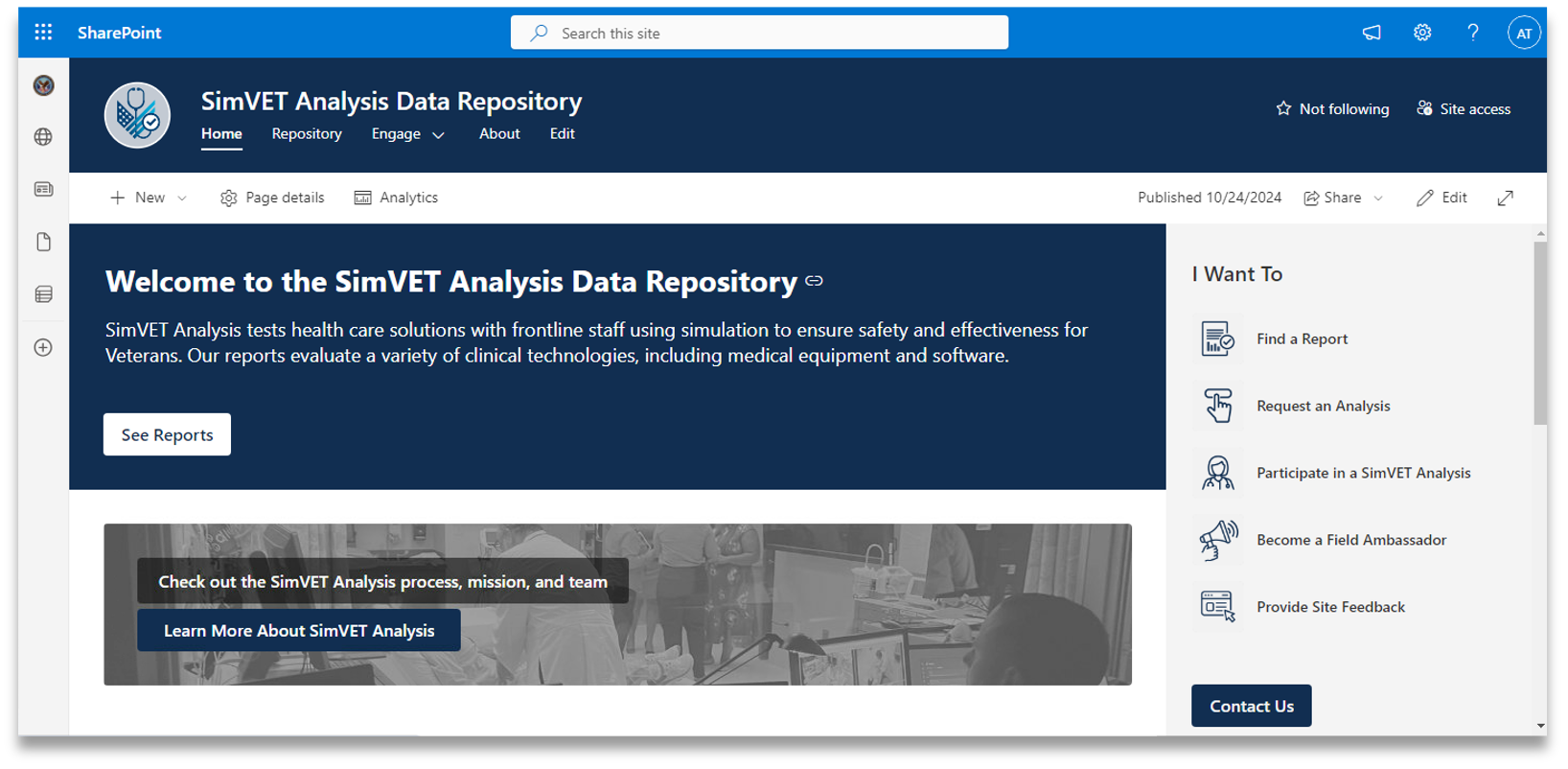
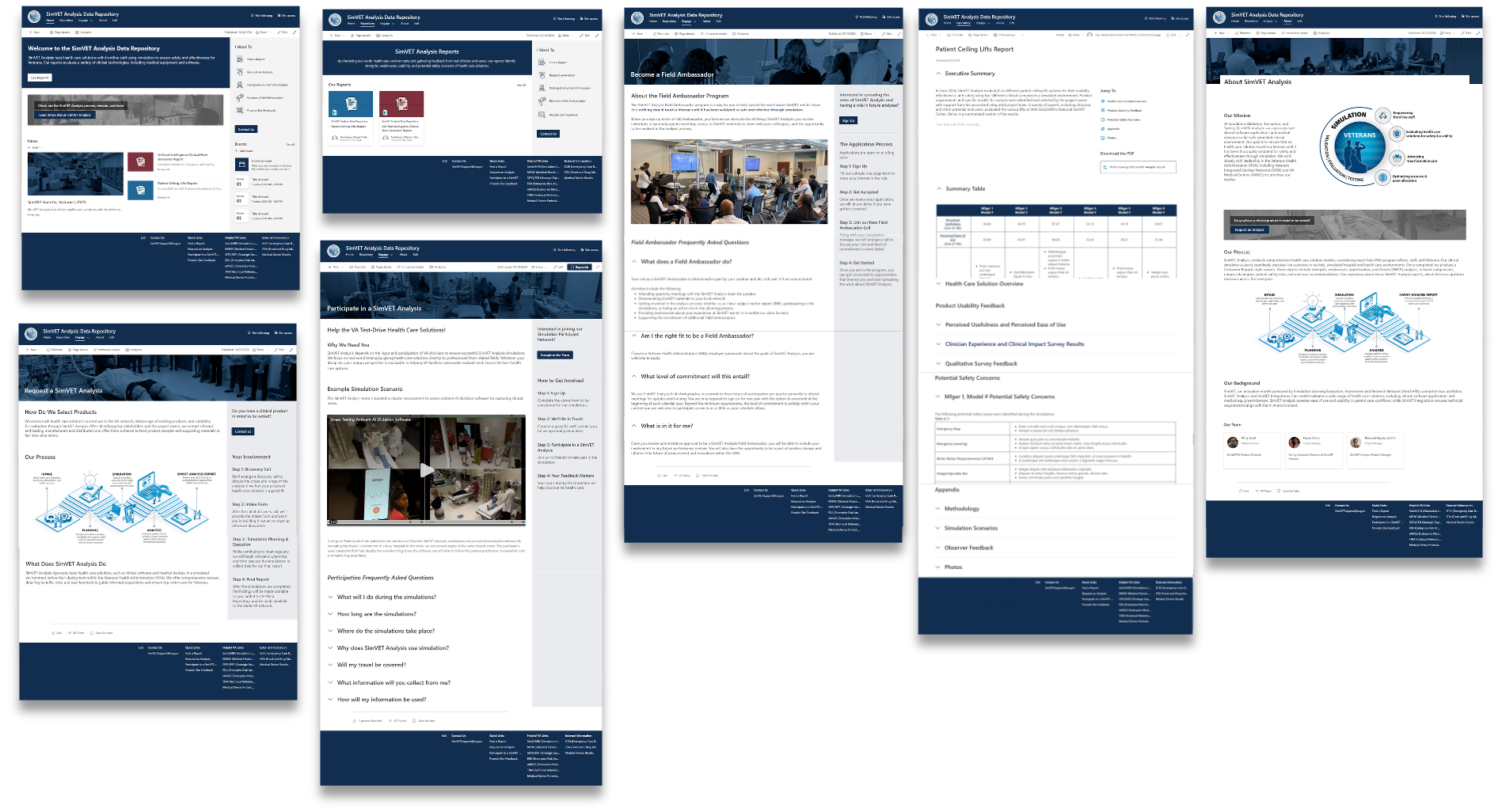
At the end of the contract year, our clients remarked, “This year was remarkable and an absolute pleasure.”
Another added, “[The Booz Allen Team] have been excellent partners. Looking forward to a bright future!”
Credits:
Team: Nida Krailas, Ryan Horn, Kenneth Kratz, Kat Schneider, Akash Ray, Sharon Rothman, Huma Abdul Rauf, Aaron Lide Jr., and Kari Usery
Stakeholder & User Interviews
Before we began to design this data repository, we wanted to ensure we were designing the right thing and gaining the right mental models to serve as a blueprint for the design.
During this phase we
- Outlined initial concept with the client
- Conducted secondary research and a material audit
- Conducted 3 Stakeholder Interviews
- Conducted 3 User Interviews
- Identified 3 User Groups
- Established site purpose, goals, and scope
These efforts proved beneficial for the foundation of the site development:
- Ensured the site was built based on real user need and with their workflows in mind
- Gave us a better understanding of the users
- Gave us a clear mental model for the site that was the basis of requirements and wireframing
- Identified potential business development needs


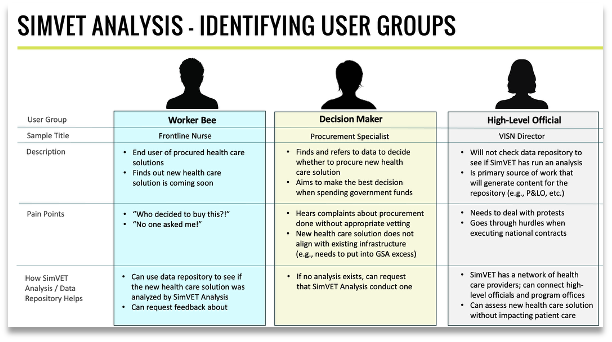

Requirements Gathering & Initial Wireframing
After our initial research, we worked to identify key requirements for the site and begin low-fidelity wireframing.
During this time, we
- Identified user flow
- Brainstormed features
- Conducted MoSCoW feature prioritization
- Designed 6 different iterations of low-fidelity wireframes
This phase set us up well as we moved closer to design and development:
- Requirements and wireframing gave us a language to be able to speak with our developer with specifics
- These early wireframes allowed us to pulse check the vision for the site with the team and client in a low-risk environment



Prototype Development
Once we felt good about our initial iterations, I used Adobe XD to design our first interactive prototype of the site.
The prototype included:
- Four (4) interactive pages including local scroll, simulated filtering, and section accordions
- Three (3) interactive modal windows
This phase set us up well as we moved closer to our first usability testing:
- Had a working interactive prototype that simulated the real site which was used for usability testing
- Efficient use of developer bandwidth by testing before building, therefore reducing development time and design defects
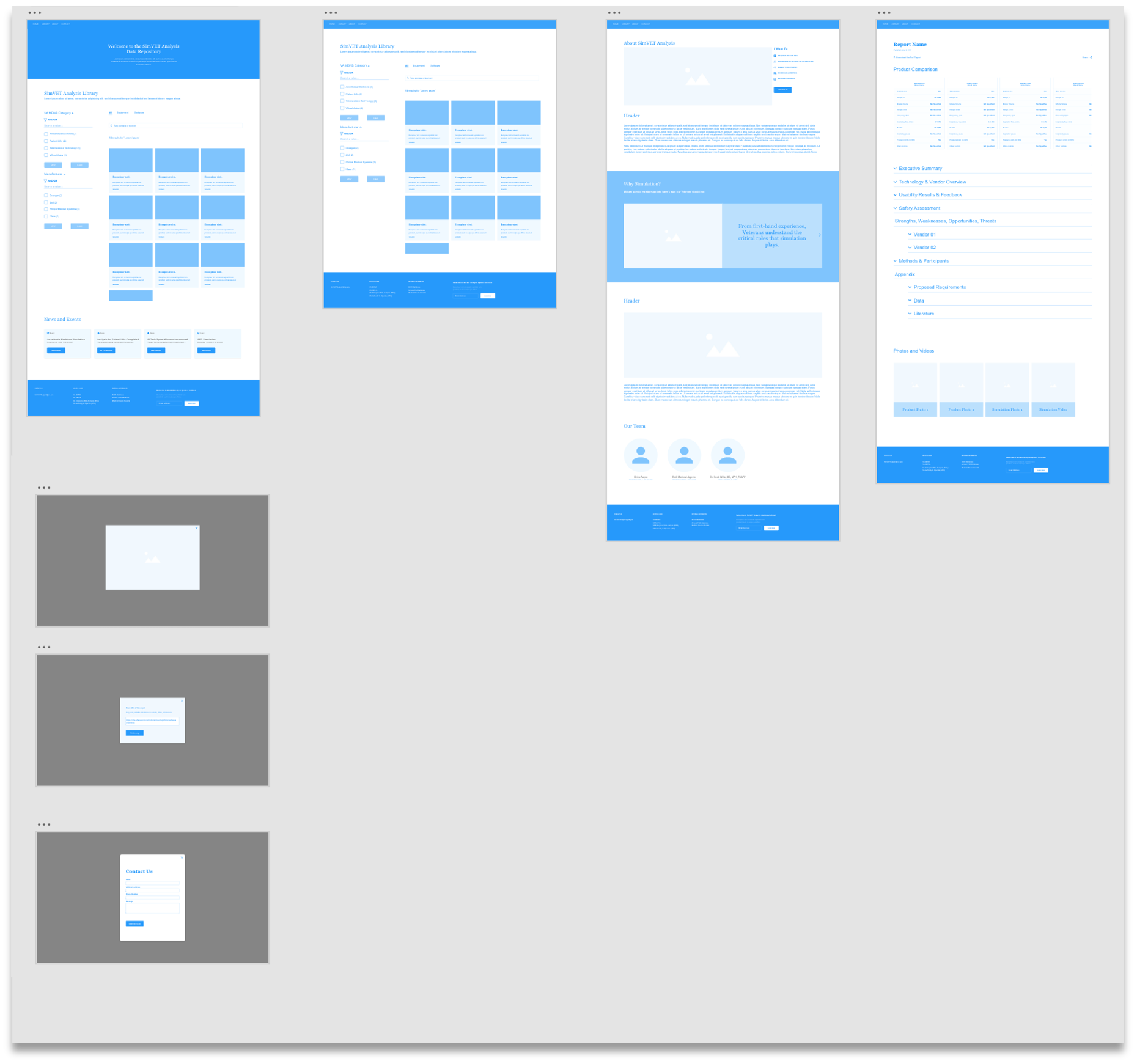




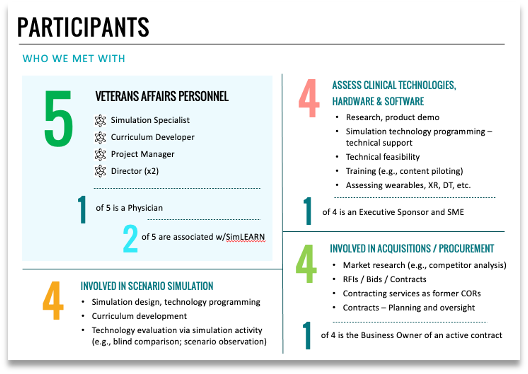
Prototype Testing
Once our prototype was ready, we enlisted users to test our the prototype before starting development.
During this time, we
- Led 5 users through 11 tasks
- Synthesized 444 data points
- Identified 14 areas of improvement
This phase set us up well as we moved to development:
- Gained a lot of user feedback which changed the overall design of several key pages and inspired new pages for the site
Visual Collateral Development
Before we initiated development, we partnered with a graphic designer to develop branding for the site that aligned with VA guidelines. I led facilitation sessions with the team and clients to identify the right branding direction.
During this time, we
- Led 5 ideation sessions with the team to identify the overall SimVET Analysis brand, each graphic’s content and goals, and feedback for initial designs
- Developed 2 graphics, 1 favicon, and overall site visual design
- Developed Visual Style Guide
This phase really boosted the appeal of the site:
- Client extremely pleased with the visual design direction and collateral
- New comprehensive graphics which can be utilized throughout SimVET collateral
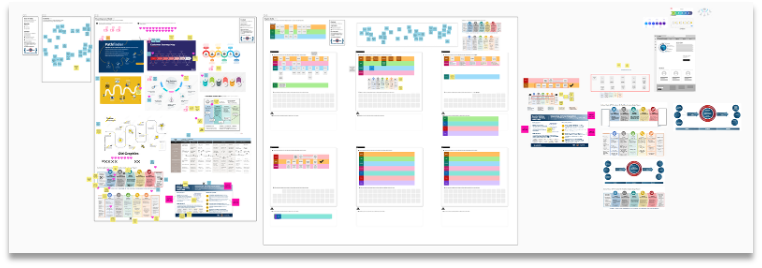
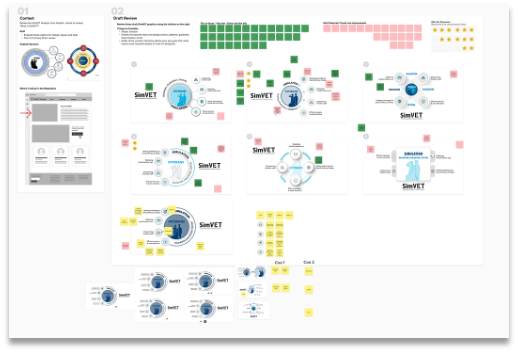



Copywriting, Development Blueprint & Building
In order to give essentialinformation to our developer to begin building, we worked as a team to write copy and created a blueprint to hand over all relevant info.
During this time, we
- Wrote content for 6 pages
- Created a development blueprint which identified SharePoint webparts, copy, links, and visuals
- Built the SharePoint Beta site
This phase’s impact included:
- Content makes sense and resonated with initial viewers
- Blueprint streamlined development process and created a single point of truth for the build






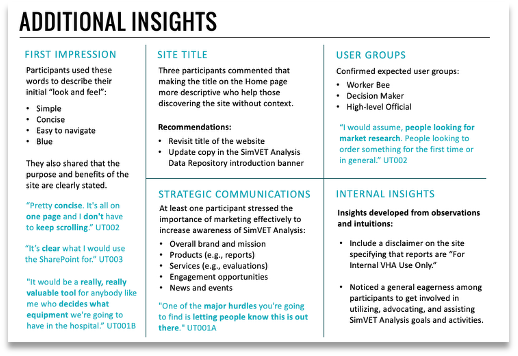
Usability Testing
Once our prototype was ready, we enlisted users to test the built out site before refinement and launch.
During this time, we
- Led 5 users through 10 tasks
- Synthesized 410 data points
- Identified 8 areas of improvement
This phase’s impact included
- Live, qualitative feedback on an actual build that users interacted with for the first time
- Able to incorporate data from interviews, prototype testing, and usability testing to get the content to where it stands now
Refinement
After usability testing, we used the data we gained to refine the design of the site.
During this time, we
- Revised site copy
- Updated visual elements
- Created and added additional page
This phase’s impact included
- Minimal viable product (MVP) build not only met the initial requirements but also surpassed what was expected and was set up for soft launch and future usability feedback







Polish & Launch
After refinement, we planned for launch and client hand-off.During this time, we
- Developed a newsletter strategy
- Created 2 templates and 2 SOPs
- Scheduled launch in 2 waves
This phase’s impact included
- Client was reassured that their launch would kick off in a controlled manner, enabling them to assess the activity, functionality, and amount of support required
- Newsletter can serve as a robust strategic comms pathway for brand awareness, informing, and call-to-actions to increase and solidify engagement
- Able to support the client on getting everything needed for an upcoming conference
 ALLISON JOY TOMLINSON
ALLISON JOY TOMLINSON 



